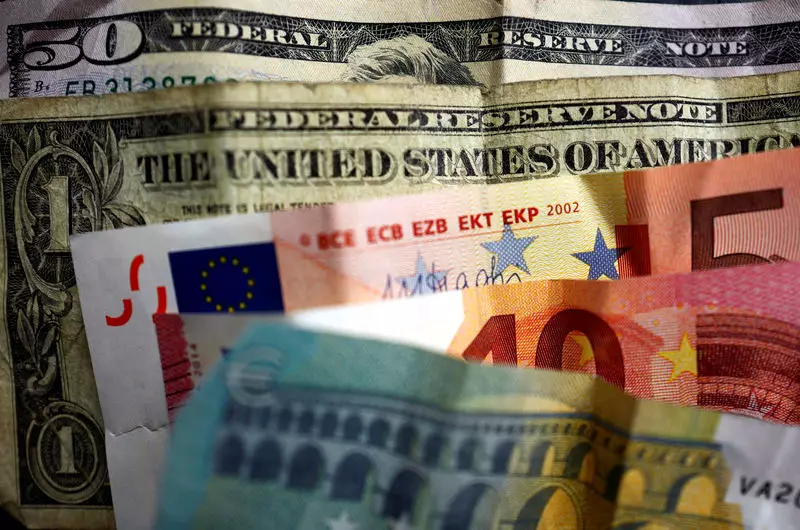In the realm of global finance, currency fluctuations often reflect deeper economic currents. Recent movements in the US dollar and euro illustrate a market landscape filled with uncertainty and volatility. As investors await key labor figures, the diplomatic and economic narratives intertwine, shaping the decisions made in trading rooms worldwide. This article analyzes recent market behaviors, the underlying reasons for these fluctuations, and the anticipated paths of major currencies.
On the last trading day of the week, the US dollar experienced a modest rise, inching up by 0.1% on the Dollar Index, which measures its performance against a basket of six major currencies. Despite this seemingly positive uptick, the greenback remains close to three-week lows, having faced a significant 0.6% decline in prior sessions. This ambivalence reveals a cautious sentiment among traders who are closely monitoring various economic indicators, especially the forthcoming monthly jobs report.
The US labor market presents a mixed picture. A recent decline in private sector payrolls and rising jobless claims hint at a potential cooling of the labor market. Such indicators provide a foundation for speculations that the Federal Reserve might consider further interest rate cuts if the jobs report reflects weak job growth. Fed Chairman Jerome Powell, however, recently suggested an unexpectedly stronger economy than the central bank anticipated during its September decisions. This commentary introduces a layer of complexity into the dollar’s trajectory, as traders grapple with the implications of Fed policy amidst conflicting economic signals.
Market observers expect around 200,000 new jobs to be reported for November, a rebound from a troubling October where job creation was dampened by hurricane impacts, yielding only a minuscule increase of 12,000 jobs. Concurrently, the unemployment rate is projected to slightly increase to 4.2%. Such outcomes could drastically influence market perception and subsequently the dollar’s position against other currencies. Analysts from ING articulated the sentiment succinctly: while the dollar enjoyed a rally following favorable political shifts, upcoming job statistics could prove critical in maintaining or disrupting long-held positions in the dollar.
In sharp contrast, the euro continues to experience downward pressure against the dollar, trading at 1.0575 USD. Recent reports indicating an unexpected decline in German industrial production—down 1.0% in October—have compounded the euro’s weakness. This downturn, following a revised 2.0% drop in September, indicates persistent challenges within Europe’s largest economy. The German economy ministry’s assertion that the industrial sector remains in a downturn points to broader economic frailties within the eurozone.
As the eurozone displayed only modest growth—0.4% quarterly and 0.9% annually—market expectations for future actions by the European Central Bank (ECB) have adjusted accordingly. With many traders pricing in over 150 basis points of potential rate reductions by the end of 2025, the ECB’s strategy now appears increasingly dovish, reflecting concerns about sustained economic stagnation across member states.
Adding to the euro’s woes is the recent political turmoil in France, where Prime Minister Michel Barnier faced a no-confidence vote. The absence of a stable government complicates fiscal policy, particularly in relation to the country’s budget deficit. Standard & Poor’s expressed beleaguered outlooks on France’s ability to finalize its budgetary policies prior to year-end, suggesting significant challenges lie ahead.
As the US jobs market figures draw close, traders globally remain cautious, with most currencies exhibiting subdued movements. The GBP/USD, however, managed to gain some traction, rising to 1.2763, buoyed by positive data on UK house prices, which rose for five consecutive months. The upward trend in property values, driven by a 1.3% increase reported by Halifax, signals potential recovery in the UK economy.
In Asia, currencies showed modest movement in response to the US economic landscape. The dollar strengthened against the Japanese yen and Chinese yuan, reflecting the anticipated impact of US labor statistics on global markets. Despite the mixed signals captured in economic indicators, the prevailing sentiment seems to favor a cautious bullish outlook for the US dollar.
Yet, the aftermath of these developments remains uncertain. The interplay of political events, economic indicators, and market sentiment creates a highly dynamic trading environment. As traders prepare for the release of critical economic data, all eyes will undoubtedly be on the forthcoming jobs report to determine the future trajectory of the dollar and its rivals on the global currency stage.


Leave a Reply